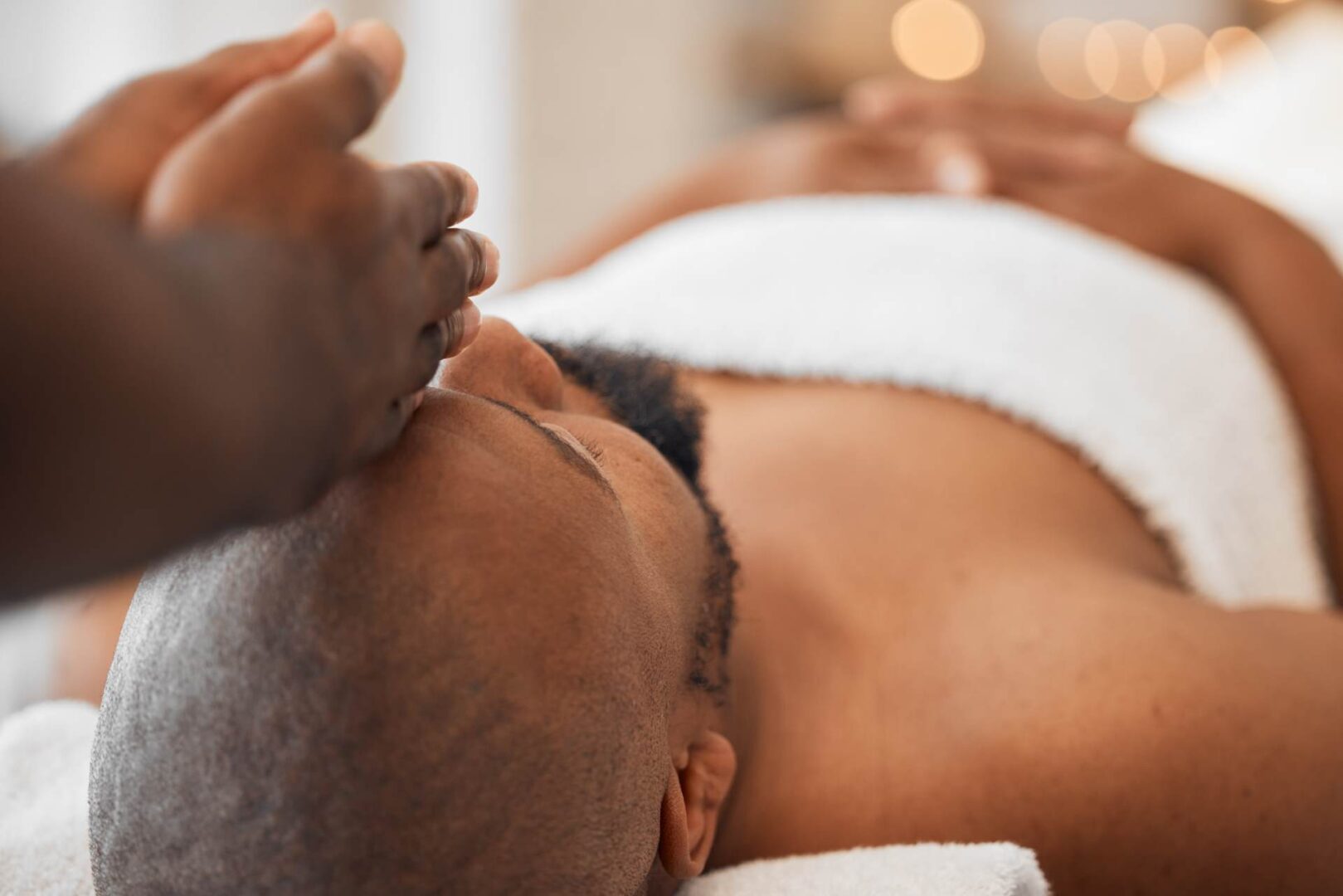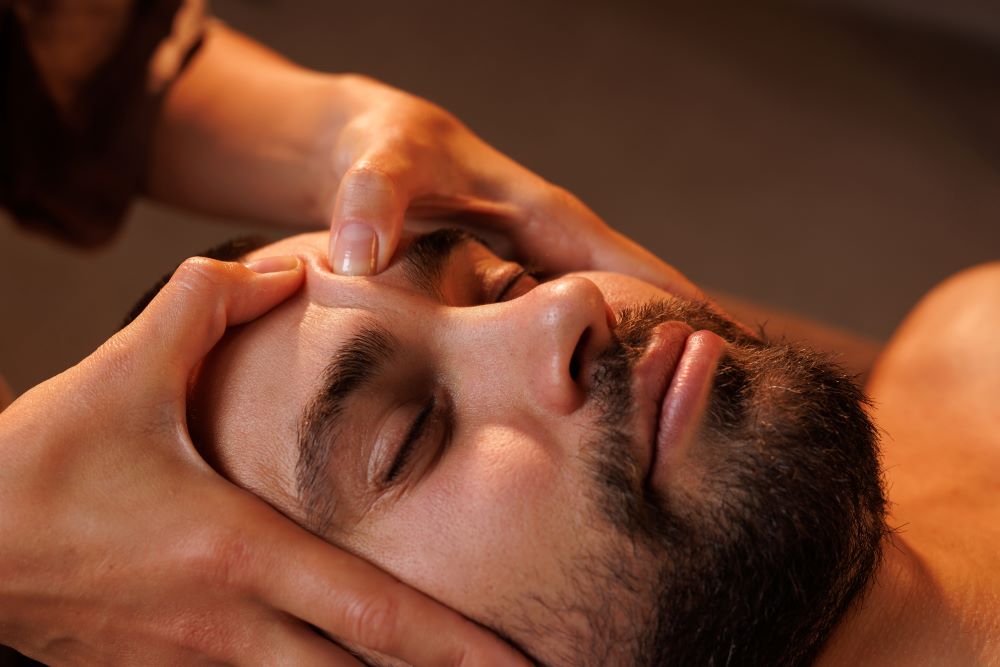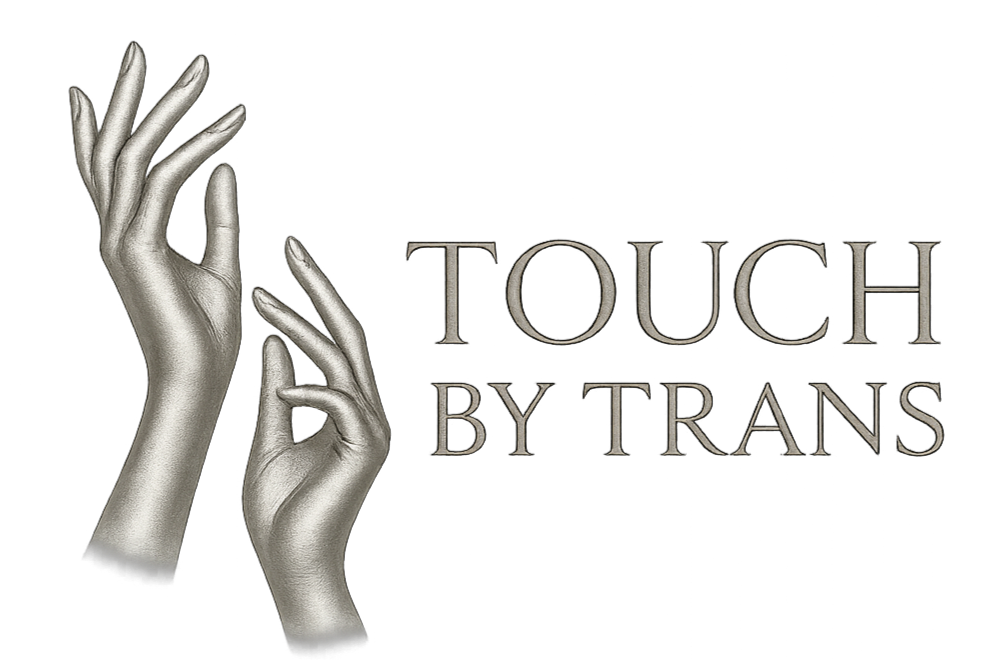Crying During Massage – Surprising Reasons & Healing Benefits

By Ms. Kelly, Licensed Massage Therapist
Crying during massage might feel embarrassing at first, but it’s actually one of the body’s most natural responses to healing. When touch reaches deeper layers of tension, it can unlock emotions you didn’t even know were stored in your tissues. Instead of resisting it, understanding why crying during massage happens can help you see it as part of recovery, not weakness.
Understanding Why Crying During Massage Happens
When we think about massage, we often focus on the physical benefits like relieved muscle tension, improved circulation, and pain reduction. However, our bodies store much more than just physical stress. Emotional experiences, trauma, and daily pressures can literally become “stuck” in our muscle tissue and fascia.
During my training and years of practice, I’ve learned that therapeutic touch doesn’t just address physical knots. It can unlock emotional ones too. When skilled hands work on areas where we hold tension, they’re not just releasing muscle fibers. They’re potentially accessing stored emotions and memories that have been quietly influencing our physical well-being.
Many clients ask me about crying during massage, wondering if their emotional response is unusual. The truth is, emotional release through tears is one of the body’s most natural healing mechanisms during therapeutic touch.

The Science of Emotional Release
Your autonomic nervous system works behind the scenes, controlling involuntary bodily functions including your emotional responses. During massage, several fascinating physiological changes occur that can trigger emotional responses and explain why crying during massage is so common.
The parasympathetic nervous system becomes activated, which is your body’s “rest and digest” mode. This creates a safe space for emotional processing that might not happen during your busy daily life. When your body finally feels safe, crying during massage can be the natural result.
Therapeutic touch releases a cascade of beneficial hormones including endorphins, oxytocin, and it reduces cortisol levels. This chemical shift in your body can create the perfect environment for emotional release. Additionally, our muscles often hold what we call “muscle memory,” where tension patterns correlate directly with emotional holding patterns.
The vagus nerve, which runs from your brain down to your abdomen, plays a crucial role in emotional regulation. Massage therapy can stimulate this important nerve, potentially triggering emotional responses as your body shifts from a state of chronic tension to deep relaxation. It’s like your body finally feels safe enough to let go of what it’s been holding onto.
Common Emotional Responses in Massage Therapy
There are several common reasons why people experience emotional responses during massage therapy. Stress relief and overwhelm represent one of the most frequent causes of crying during massage. Many of my clients carry enormous amounts of daily stress, and when they finally receive nurturing touch in a safe environment, the contrast can be overwhelming. Those tears often represent pure relief, your body’s way of saying “finally, I can let go.”
In our increasingly digital world, many people experience what researchers call “touch deprivation.” For some clients, therapeutic massage might be the only positive, non-sexual touch they receive regularly. This realization can be deeply moving and bring up feelings they didn’t even realize they were carrying, often resulting in crying during massage.
Our bodies are incredibly intelligent storage systems. Physical areas where we’ve experienced injury, illness, or emotional trauma can hold these memories in ways we don’t consciously understand. When massage work releases physical tension in these areas, emotional memories may surface unexpectedly. It’s not uncommon for a client to suddenly remember something they hadn’t thought about in years while I’m working on a particular area.
Modern life often requires us to suppress our emotions to function effectively at work, in relationships, and in social situations. The massage room provides a rare safe space where you have permission to feel whatever comes up without judgment or the need to “hold it together” for anyone else.
Sometimes the tears come from a place of pure gratitude. There’s something powerful about finally taking time for self-care, or suddenly recognizing how much your body needed this attention. I’ve had clients experience crying during massage simply from the realization that they deserve to be cared for in this way.

Healing Benefits of Crying During Massage
Crying during massage isn’t something to be embarrassed about. In fact, it’s often a sign that real, meaningful healing is taking place. Your body is communicating that it feels safe enough to release what it’s been holding onto, sometimes for years.
When emotions surface during massage, you might experience spontaneous tears that seem to come from nowhere. You might notice deep sighs or changes in your breathing pattern. Sometimes memories or images surface that you haven’t thought about in a long time. Physical sensations like warmth or tingling are also common, and many clients report a profound sense of relief or lightness afterward.
The release process is deeply personal and varies from person to person. Some people experience gentle tears, while others might have more intense emotional responses. Both are completely normal and part of your body’s natural healing process. Understanding that crying during massage is beneficial can help you embrace rather than resist these moments.
How to Navigate Emotional Release During Sessions
Before your session, I always encourage clients to communicate with me about any concerns they might have, including previous experiences with crying during massage. Setting intentions for your session can be helpful, and it’s important to remember that emotional responses are not only normal but often welcomed as part of the healing process.
During an emotional release, the most important thing is to allow the feelings without judgment. Try to breathe deeply and stay present with whatever you’re experiencing. Don’t hesitate to communicate with your therapist if you need anything, whether that’s tissues, a moment to pause, or just reassurance. Remember that you’re in a safe, professional environment where crying during massage is understood and respected.
After your session, it’s important to drink plenty of water and rest if possible. Many clients find it helpful to journal about their experience, as this can help process any emotions that continue to surface. Be gentle with yourself as emotions continue to work through your system over the following days.

When Emotional Release Requires Extra Support.
While emotional release and crying during massage is generally healthy and beneficial, there are times when additional support might be helpful. If you experience overwhelming trauma responses, panic attacks during sessions, or have difficulty returning to your normal emotional baseline after sessions, it may be worth speaking with a mental health professional.
If you find yourself experiencing intrusive memories or flashbacks related to your massage sessions, this could indicate that deeper trauma work might be beneficial. As massage therapists, we’re trained to recognize when someone might benefit from additional support, and we can refer you to appropriate mental health professionals who specialize in trauma-informed care.
When Extra Support Is Needed in Massage Therapy
As a massage therapist, I’ve learned that creating the right environment is absolutely crucial for healthy emotional processing and supporting clients who may experience crying during massage. This means maintaining clear professional boundaries while still providing compassionate support when emotions arise. It involves clear communication about what’s happening during the session and maintaining appropriate therapeutic relationships that respect the vulnerability and trust clients place in us.
The physical environment matters too. A calming atmosphere with soft lighting and carefully chosen music helps create the sense of safety that allows for emotional release. Comfortable temperature, clean linens, and guaranteed privacy and confidentiality all contribute to creating a space where healing can happen and where crying during massage feels safe and supported.
Creating a Safe Environment for Emotional Release
Clients who experience emotional release and crying during massage often report significant improvements in their overall well-being. They frequently tell me about decreased stress and anxiety levels, improved sleep quality, and better emotional regulation in their daily lives. Many develop increased body awareness and an enhanced sense of overall well-being that extends far beyond the massage session itself.
Perhaps most importantly, allowing emotional release and crying during massage often creates a deeper connection to the healing process itself. Clients begin to understand their bodies as integrated systems where physical and emotional health are intimately connected. Research shows that therapeutic touch can significantly impact both physical and emotional well-being.

FAQs About Crying During Massage
Q: Is crying during massage normal for first-time clients? A: Absolutely yes. First-time massage clients often experience emotional responses, including crying during massage, because it’s their initial experience with therapeutic touch in a professional setting, and their bodies may have been waiting for this kind of care for a long time.
Q: Should I warn my massage therapist that I might experience crying during massage? A: Yes, I always encourage clients to let me know if they think they might get emotional during their session. This communication helps me provide better care and ensures that I’m prepared to support you appropriately. Most experienced massage therapists are trained to handle crying during massage professionally and compassionately.
Q: What should I do if I start crying during massage? A: The best thing to do is simply allow the emotions to flow. I’ll offer tissues and may pause the massage if needed, but there’s absolutely no need to apologize or explain what you’re feeling. Your body knows what it needs to release, and crying during massage is a natural part of that process.
Q: Will crying during massage affect the therapeutic benefits? A: Not at all. In fact, emotional release and crying during massage often enhances the therapeutic benefits by allowing your body to fully relax and heal on multiple levels simultaneously.
Q: How long might I feel emotional after experiencing crying during massage? A: The emotional effects can vary significantly from person to person. Some people feel immediately lighter and more balanced, while others may continue processing emotions for 24 to 48 hours after their session. Both responses are completely normal and part of the healing process that often accompanies crying during massage.
Q: Can I request that my therapist work in areas where I tend to hold emotional tension and might experience crying during massage? A: Absolutely. If you know you tend to hold emotional tension in certain areas of your body, you can request that I focus on those areas. Communication about your needs and preferences helps create the most beneficial session possible for your unique situation.
Q: Is crying during massage more common with certain types of massage? A: While emotional release and crying during massage can happen with any type of massage, deeper work like deep tissue massage and myofascial release often trigger more emotional responses. However, even gentle Swedish massage can facilitate crying during massage if that’s what your body needs.
Q: Should I avoid massage if I’m going through a difficult emotional time and worried about crying during massage? A: Not necessarily. In fact, therapeutic touch can be incredibly supportive during challenging periods. The key is communicating with your therapist about your current emotional state so they can provide appropriate support if you do experience crying during massage.
Embracing Healing Through Touch
Understanding why crying during massage happens helps normalize this important aspect of healing. Your body’s wisdom knows what it needs to release, and tears are simply one way it communicates and begins to heal itself. Recognizing that crying during massage is beneficial rather than problematic can transform your entire healing experience.
Remember that seeking therapeutic massage is an act of self-care and courage. Whether you experience crying during massage or simply physical relief, you’re taking important steps toward better health and well-being. The integration of physical and emotional healing that can happen during massage therapy represents one of the most profound aspects of this ancient healing art.
If you’re ready to explore the healing potential of therapeutic massage, remember that crying during massage is not a setback but part of your body’s natural healing process. Whether your session brings quiet calm or tears, both are signs that your body feels safe enough to release and heal.
For those in Frankfurt seeking experienced therapeutic massage, I offer several specialized services that understand the connection between physical and emotional healing:
- The Soothe Room – A peaceful sanctuary designed for deep relaxation and emotional release
- After Hours – Flexible scheduling for when you need healing most
- The Touch Ritual – A comprehensive massage experience focusing on mind-body integration
- One of One Massage – Personalized therapeutic sessions tailored to your unique needs
Learn more about my approach to healing through my services page or contact me to discuss how therapeutic massage can support your emotional and physical well-being.
References:
- Field, T. (2016). Massage therapy research review. Complementary Therapies in Clinical Practice, 24, 19-31.
- Rapaport, M. H., et al. (2012). A preliminary study of the effects of repeated massage on hypothalamic-pituitary-adrenal and immune function. Psychoneuroendocrinology, 37(2), 317-329.
- Van der Kolk, B. (2014). The Body Keeps the Score: Brain, Mind, and Body in the Healing of Trauma. Viking Press.
- Porges, S. W. (2011). The Polyvagal Theory: Neurophysiological foundations of emotions, attachment, communication, and self-regulation. W. W. Norton & Company.





